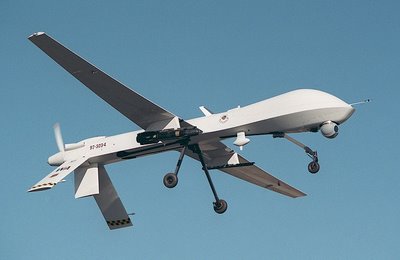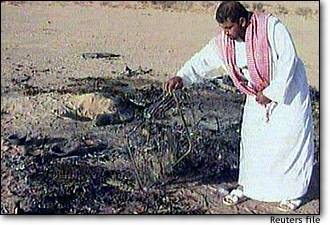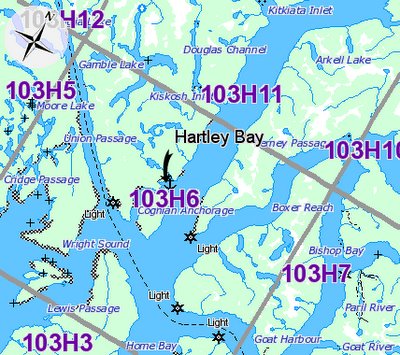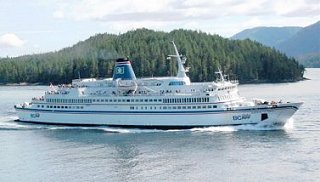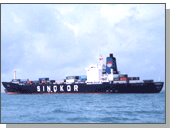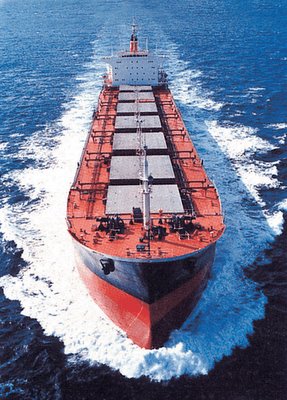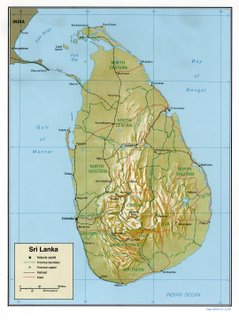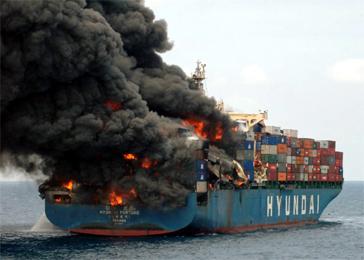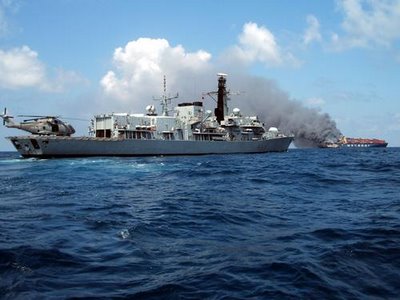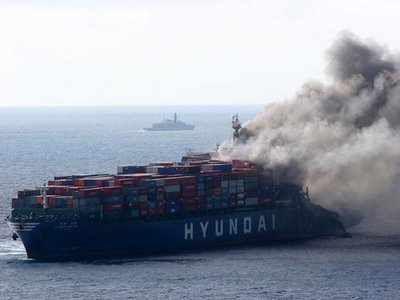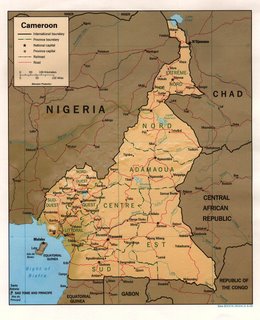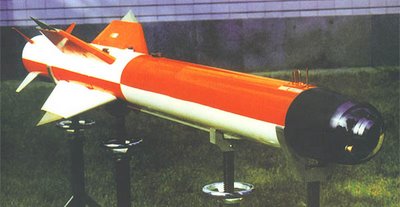
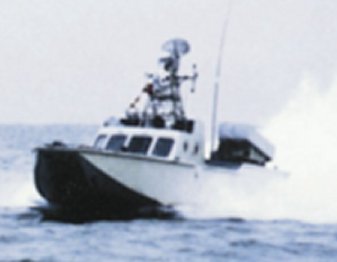
Reported
here:
Salami said the Iranian-made missile, which he did not name, was test-fired as large military maneuvers began in the Persian Gulf and the Arabian sea.
"This missile can simultaneously hit several targets, has near stealth capabilities with a high maneuverability, pinpoint accuracy and radar avoidance features," Salami said.
The general said the range of the missile would depend on the weight of its warhead.
"It can avoid anti-missile missiles and strike the target," he said.
GlobalSecurity
reported work on a stealth missile dating to June of 2004 and gave this:
Ministry of Defense and Armed Forces Logistics (MODAFL) spokesman Mohammad Reza Imani told AP on 01 June 2004 that Iran is building its first stealth missile -- a rocket that can evade radar detection -- although he did not give a range. Parts of the missile, known as Kosar, were on show at a Tehran fair showing MODAFL products to government officials. The missile, designed "for defensive purposes" and comparable to the cruise missile, is built by MODAFL's Aerospace Industries Organization. It can be launched against ships from land, ship, or air and is designed with the geography of the Persian Gulf and the Oman Sea in mind. The missile can sink "small and medium-sized naval vessels" should it strike them.
This
source says that the Chinese have variants of the Iranian missile:
China has become a leading supplier of missile systems and technology for Iran. Iran has claimed several Chinese missiles as its own, including the C-701 anti-ship missile.
The anti-ship missiles, displayed at the China Air Show 2004 in November 2004, were identified as the JJ/TL-6B, JJ/TL-10A and KJ/TL-10B.
Industry sources said the Chinese missiles are identical to Iran's Nasr and Kosar, also known as the TL-6 and TL-10. The TL-10 and C-701 missiles were said to be part of Iran's Kosar program, Middle East Newsline reported.
This
report puts C-701 antiship missiles on some high speed catamaran missile boats the Chinese sold to Iran:
In July 2002 a conventional-arms sale triggered sanctions on several Chinese companies. Beijing had transferred high-speed catamaran missile patrol boats to Iran. The C-14 patrol boats are outfitted with anti-ship cruise missiles. Short-range anti-ship missiles for the patrol boats also were sold from China to Iran in January 2002. The catamaran and anti-ship missile sales were first disclosed by The Washington Times in May 2002, shortly after the first of the new C-14 patrol boats was observed by US military intelligence at an Iranian port. The high-speed gunboat can carry up to eight C-701 anti-ship cruise missiles, and usually have one gun. There have also been reports of Iran possessing another type of anti-ship system. Up to 16 Sunburst anti-ship missile systems were traded in the early 1990's from the Ukraine.
Washington Times report (by Bill Gertz)
here Info on China's Ying Ji-7 (C-701) anti-ship missile
here:
The YJ-7 (C-701) lightweight anti-ship missile was first exhibited at 1998 Zhuhai Airshow. This missile was specially designed to attack small surface targets such as missile fast attack craft and patrol boats. With minor modifications, the YJ-7 could also be used as an air-to-surface missile to attack land targets.
***
The YJ-7 is a light-weight anti-ship missile designed specially to attack small surface targets. Powered by a solid rocket engine, the YJ-71 has a range of 15-20 km and a cruising speed of 0.8 Mach. The C-701 can be launched from ships, land-based launchers, and fixed-wing aircraft and helicopters, and has a potential to be developed into a multi-purpose air-to-surface missile
Photos are of the C-14 patrol boat and the Chinese C-701.
UPDATE: More
here. Some reports continue to assert this is a "ballistic" missile, but I don't think the description of its intended targets supports that description. I am waiting for the video clip that was shown on Iranian TV to become available.
UPDATE2: An excellent analysis of the confusion caused by the contradictory assertions (or perhaps exceptionally poor translations) of the Iranian spokesman set out
here at ThreatsWatch:
Any projectile that travels in an arced path is considered ‘ballistic’, though that term has a very specific meaning in missile and missile defense circles. That fact may not have been lost on General Salami when the term was used.
The guys at Q and O Blog probably got it about right early on in the day: For use against ships indeed. Remember that this apparent test came on the opening day of Iran’s massive naval exercise in the Persian Gulf.
Essentially, until there is a verification of a ‘ballistic’ launch detection, this could be smoke without a fire, at least without a MIRV ICBM fire, as is being speculated currently. And, if they did produce such a missile, is Iran going to indigenously produce their first nuclear warhead small enough to fit several of them on one missile?
At this point, two things are needed: A full transcript of General Salami’s words and a ‘ballistic’ launch detection verification.
The title to Steve Schippert's piece says it best: "Iran Missile Test: Vagueness of Detail Leads to Wild Speculation."
UPDATE3: Another version at
Pravda with the accompanying photo labeled simply as "missile." It is unclear to me if this is a picture of the new Iranian "wonder weapon" or jsut an example of a missile.
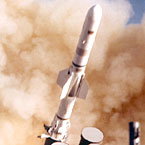
I do note that it looks very similar to the C-701 pictured above.
UPDATE4: Steve Schippert is on target again with his
post on what the media has turned into a minor version of "When in danger, when in doubt, run in circles, scream and shout." Or, as the RapidRecon headline reads: "Disservice: Media Panting on Iran's Claimed Test."
UPDATE5: (4/3/06) Revised first link to make up for a link gone bad. After reviewing some of the news reports again, it is very hard to tell if the Iranians are talking about a ballistic missile with a MIRV capable warhead (with steerable vehciles?) or something else. Judging by the launch imagery as provide by Kathryn Cramer (in the comments), if the image seen is the launch of their new wepon, it is not invisible during the
boost phase. Some people have proposed a specific approach to shooting down ballistic missiles during this "boost phase," for example
here:
The system I have advocated since 1991 would use the Defense Support Program satellites that detected every ballistic missile launch during the Gulf War -- even SCUD missile launches in the 300- kilometer range -- and feature NMD-class 15-ton interceptors based within about 1,000 km of prospective ICBM launch sites.
Far better minds than mine have been discussing this issue for some time now.
UPDATE6: (4/5/06) Looks like a box launcher, acts like a box launcher (or as Steve Schippert put it, an
"Iranian MLRS":
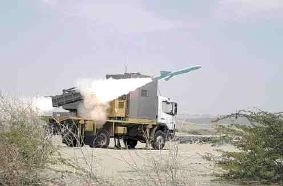
From
here. Missile identified as a "Kowsar." Looks like a TL-10 to me.







